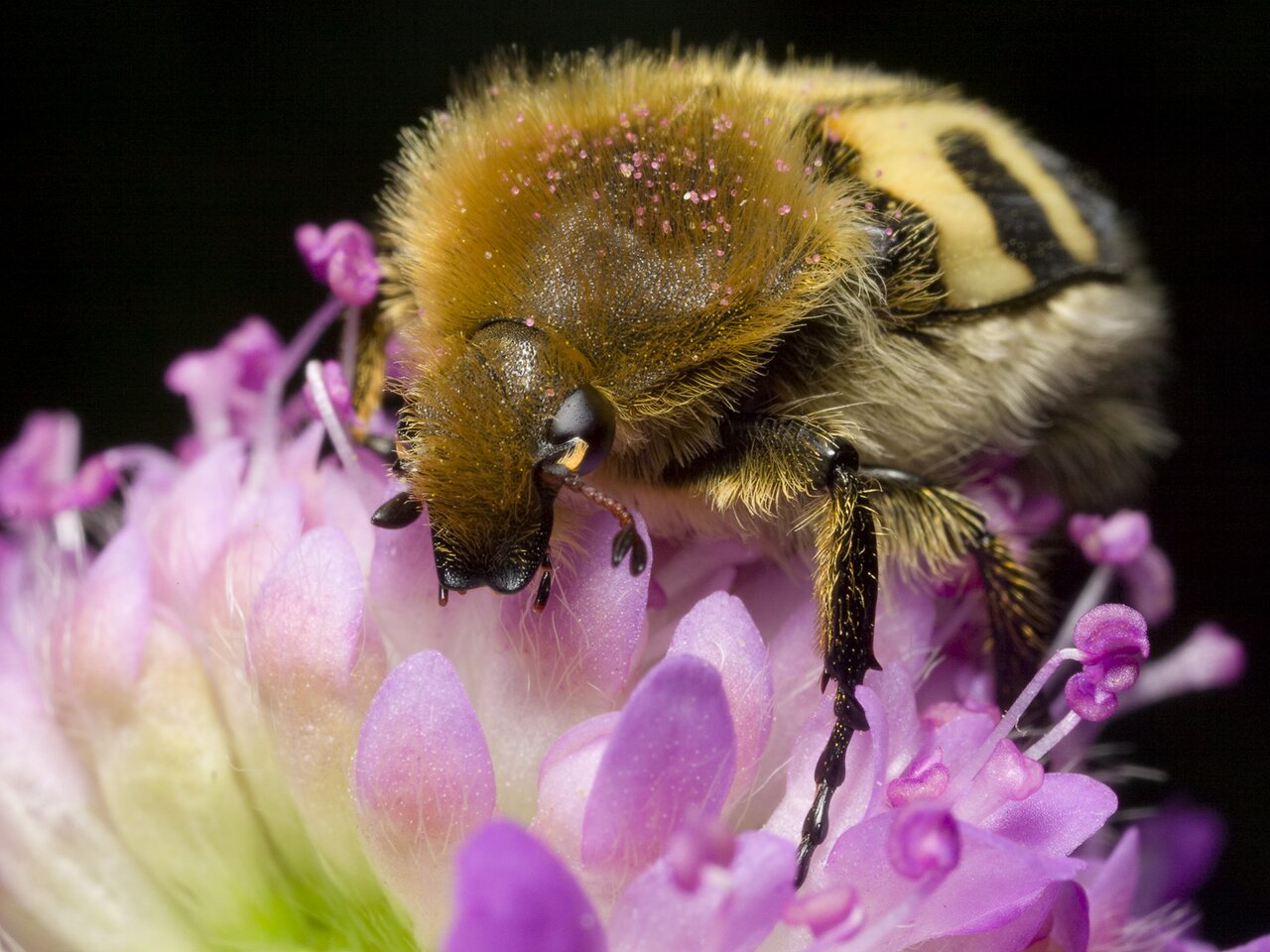
Trichius fasciatus · raštuotasis auksavabalis
on Knautia arvensis · ant dirvinės buožainės
- Eurasian bee beetle
- Gebänderte Pinselkäfer
- raštuotasis auksavabalis, grambuoliukas
- kameņvabole
- orszoł prążkowany
https://en.wikipedia.org/wiki/Trichius_fasciatus
This beetle is present in most of Europe and in the eastern Palearctic realm. It lives mostly on flowers on forest meadows and forest edges. Trichius fasciatus can reach a length of 9–12 mm. Head and pronotum are black, while the elytrae vary from light yellow to deep orange. They are crossed by a few black bands. The first black band reaches the scutellum.The sides of the chest and the back of the abdomen are covered with a yellow-orange or white pubescence. This makes it look a bit like a Bumblebee, giving it better protection from predators. Hence the popular name of "Bee beetle" for their genus. Adults can be encountered from May through July feeding on pollen of various flowering plants. The larvae feed mainly on dead wood and other organic parts of various deciduous trees.
Kūnas 9 - 14 mm. Galva, priešnugarėlė, skydelis, pigidiumas ir kūno apačia juodos spalvos, apaugę tankiais pasišiaušusiais, gelsvais ar pilkšvais plaukeliais. Antsparniai matiniai, gelsvai oranžiniai, su juodais dryžiais. Aptinkami vasarą, ant įvairių žolinių ir sumedėjusių augalų žiedų. Lervos vystosi trūnijančioje lapuočių medienoje. Spalva ir piešiniu panašūs į kamanes (mimikrija).
‥